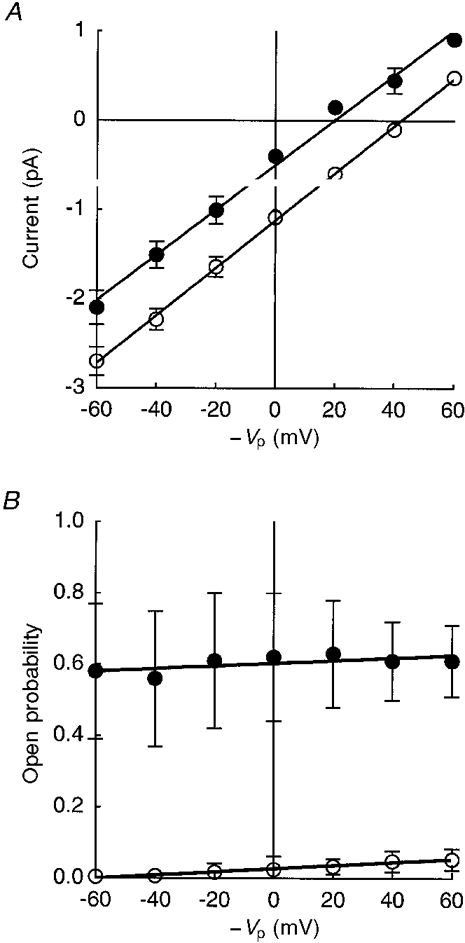Figure 2. Current-voltage relationships of single channels (A) and voltage dependence of channel open probability (B) before and 30 min after application of terbutaline in cell-attached patches.

A, current-voltage relationships before (^) and 30 min after (•) application of terbutaline (10 μM) were linear with reversal potentials of 41.7 ± 2.3 and 19.8 ± 3.3 mV(n = 8, P < 0.00001) more positive than the resting apical membrane potential, respectively. Application of terbutaline caused a change in the reversal potential of 21.9 ± 4.0 mV (n = 8, P < 0.00001). The results were obtained from eight individual cell-attached patches. B, voltage dependence of channel open probability before (^) and 30 min after (•) application of terbutaline in cell-attached patches. At all potentials (−Vp) tested (−60 to 60 mV), the open probability increased after terbutaline application. The open probability in control patches showed a slight dependency on the membrane potential, i.e. depolarization increased the open probability (0.42 ± 0.30 V−1, n = 8, significantly larger than zero with P < 0.01), while in terbutaline-activated channels no voltage dependence was observed (0.38 ± 0.65 V−1, n = 8, not significantly different from zero). The results were obtained from eight individual cell-attached patches. Four out of a total of eight patches contained only one channel per patch, and the other four patches had two channels per patch.
